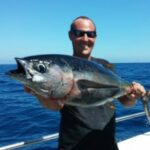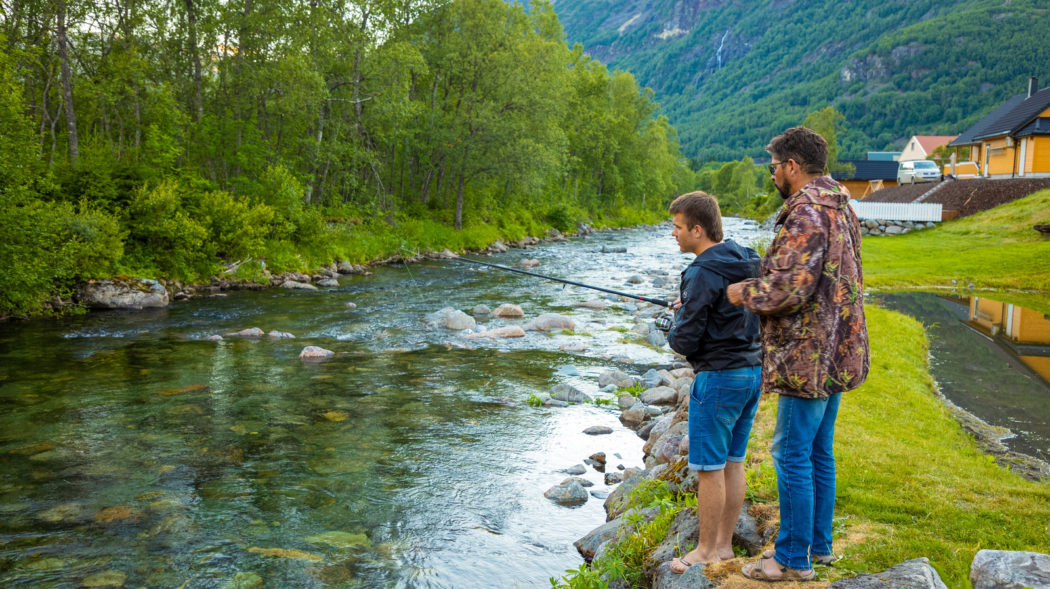What is Drift Fishing? Learn How To Drift Fish!

The moment you walk down the bank to the local “secret” steelhead spot, you’ll see a hundred guys piled along the rocks drift fishing. Morning to night, summer to winter, it’s what you do to catch fish here.
The thing is, the first time I walked down the bank, I didn’t even know what drift fishing was. You might also be interested in this article about rip rap fishing that we have.
What is Drift Fishing?
Drift fishing is a blanket term used to describe the practice of letting your lure float down the river through the water column naturally. The weighted jig or bait or whatever the target species are biting on is cast upstream under a float. It then drag-free-drifts down at an appropriate weighted depth to where you believe a fish is.
You’ll hear people call it bobber doggin’, boon doggin’, side drifting, and a million other things. Where I live, some guys even call drift fishing “training wheels”. There are little nuances and a bit different gear to every technique behind the name, but they’re all fairly similar.
Why Drift Fish?
Because it works. The training wheel guys will tell you that watching a bobber float down a river takes about as much skill and half the talent as watching paint dry. I’m here to tell you the point of fishing, besides thinking about catching fish, is actually catching them. If a guy thinks a technique makes catching fish too easy, I’m the guy adding that technique to my tool belt. I can’t tell you how often I catch bluegill using simple techniques like drift fishing.
How To Drift Fish
Side drifting under a bobber is the most common form of drift fishing around. It’s what we’ll cover here. It starts like any other form of fishing, with reading the water.
Reading the Water
The clarity of the water, the depth and speed, and the temperature will all affect the target species’ location. They’ll also affect what the fish can see and what you can get away with. Generally, you’ll run a light and long setup (light lure, long leader, long cast) in the summer. In the winter, you can get away with the opposite (although obviously this doesn’t work if you’re ice fishing). The key in all cases is a natural presentation right on the fish’s forehead.
The Tackle
The tackle will change, of course, based on the species you’re targeting when you’re drift fishing.
The Rod
If you’re going for a big anadromous fish like a steelhead, you’ll want a specially designed steelhead rod. They can handle big fish and have a fast action, so you know when to set the hook.
Targeting a smaller species? Fast action is still the name of the game. You will be reading your bobber and rod as much as you read the water.
Reel & Line
Whether gear or fly fishing, you’ll want a decent reel and a heavy line. Make sure the reel has a fine adjustable drag that you can throw a fish on.
Again, here we drift fish for Steelhead and Steelhead run. A summer steelhead feels like it’s running all the way back down to the ocean.
For that same reason, when drift fishing, you’ll want to pair the reel with the heaviest line you can get away with. Braided line is an option here, but only if you don’t mind beating up your gear.
Terminal Tackle
The key to side drifting correctly is the setup. Luckily most shops have a drift fishing pack you can buy that has everything you’ll need.
The main components (in the order you put them on) are a bobber stop (attached to your actual line), a bead, a properly weighted bobber, another bead, and a swivel.
You’ll attach the swivel to a line that’s a little lighter than your mainline and an appropriate length for the conditions. Think a couple-few feet in the winter and a couple-few extra in the summer.
On the end of that line is your bait or lure. The bait or lure is the next step. If using a lure or jig, you want to think about color and weight. One of the best fishermen I know swears by white and pink for Steelhead.
The Technique
Once you’ve read the water and have an idea where you believe the fish is, you’ll want to cast your bait or lure well ahead of it. Reel in quickly, if necessary, to get the line just tight, then try and keep it off the water.
Lure drifting; the next step is one you’re familiar with. Watch and wait. Many fish will taste the lure and spit it out, so even if you just see the bobber stop, you should be setting the hook.
If the bobber doesn’t stop, reel the line in downstream and cast up again. Make sure you hit all the sections of the hole multiple times. Fish all the seams and behind every rock. Big fish are picky. Give them time.
The Final Step!
If you’ve done everything right to this point, you’re reading the water and adapting to various conditions. You have the correct rod, the right reel, and the right bait. You’re casting well ahead and focusing on a slack-free, drag-free drift, and most importantly you’re ready for the final step.
The final step: A tight line.
The Secret
If you’ve made it this far, you deserve to hear the Secret to side drifting success. Back on the first day of visiting my local “secret spot,” I noticed two things. One, yes, most guys were drift fishing. Two, though, only one guy was catching. Every day from then on, it was the same thing. Same guy.
One day I asked him what he was doing differently.
Between casts and drags on a dangling smoke, he said three words. “Set the hook.” That was it. All his sage wisdom in three words. So, I went back to watching and eventually figured it out.
He cast above where he thought the fish would be like everyone else, but then things changed. Every time I assumed his jig bounced off a rock or caught an eddy, he assumed a fish took it. He set the hook, hard, thirty times a run. And he wasn’t looking at the water either. And barely his bobber. He was watching the tip of that fast-action rod. Every time it flicked. Every time. He set the hook.
Are You a Visual Learner?
Check out this great video on how to drift fish for salmon, trout and steelhead.
If you’re interested in learning about fly fishing for pike during the spawn, please check out our article.
Now go set the hook!
As an Amazon Associate, Fishermen's Angle earns from qualifying purchases. We get commissions for purchases made through links in this post.


